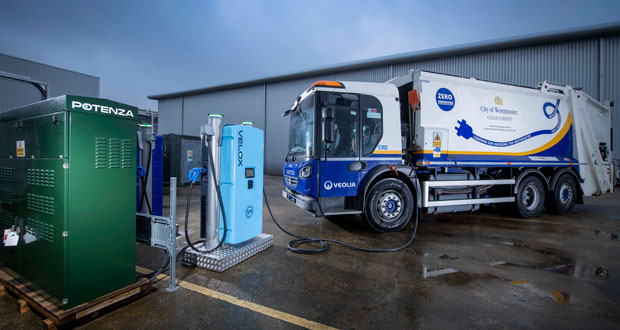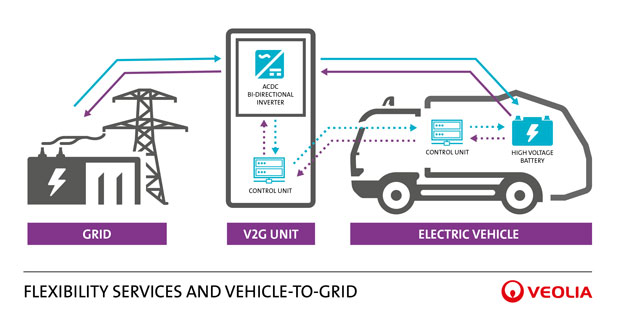The waste collection fleet operator plans to electrify all of its 1,800 Refuse Collection Vehicles, RCV, in the country by 2040, and has unveiled a world-first vehicle-to-grid (V2G) innovation that will enable waste collection trucks to power UK homes by feeding back stored energy from their batteries to the grid at its recent ‘Deep Dive’ event in London.
According to Veolia, this transformation will enable the company to provide to the grid around 200 MW of flexible power capacity daily, an equivalent of the evening peak energy demand of over 150,000 homes, supporting the country’s energy security.
With electricity demand in the UK expected to double by 2050 and Government’s targets to decarbonise the National Grid by 2035, Veolia says batteries have a role to play as they can not only recharge from the electrical grid, but they can also feed back stored energy from their batteries to the grid using to V2G. This can provide energy during peak demand periods, contribute to grid stability by regulating frequency and voltage, and even store excess renewable energy for later use.
Veolia has taken the potential of this technology to a new level by applying it to collection vehicles, which are ideally suited to V2G as their batteries are six times larger than those in an average car, and the fleet is usually parked at peak energy consumption times for the National Grid.
The first phase of the trial performed by Veolia has been “successfully completed”, enabling 110 KW of energy to be charged and discharged from two specially designed bi-directional vehicles, enough to supply power to 110 households for over two hours during peak evening hours. Veolia now plans to expand the trial and test it out on the streets, using Westminster council collection vehicles to pilot the innovation.
In addition, Veolia says it will maximise the use of local decarbonising energy from its waste-to-energy plants to power its vehicles, creating a perfect circular loop. This will include the Landmann Way vehicle depot in North London, powered by low-carbon electricity from the SELCHP plant.
Estelle Brachlianoff, CEO of Veolia, said: “We need to innovate in local decarbonising energy and transform our traditional approaches to take advantage of untapped sources. This requires a change of mindset and a collective willingness to rethink the way we produce, distribute and consume energy. The success of the V2G demonstration illustrates this perfectly. By enabling electric vehicles to become active players in the power grid, we are harnessing their potential to balance energy supply and demand, reduce carbon emissions and promote renewable energy.”






